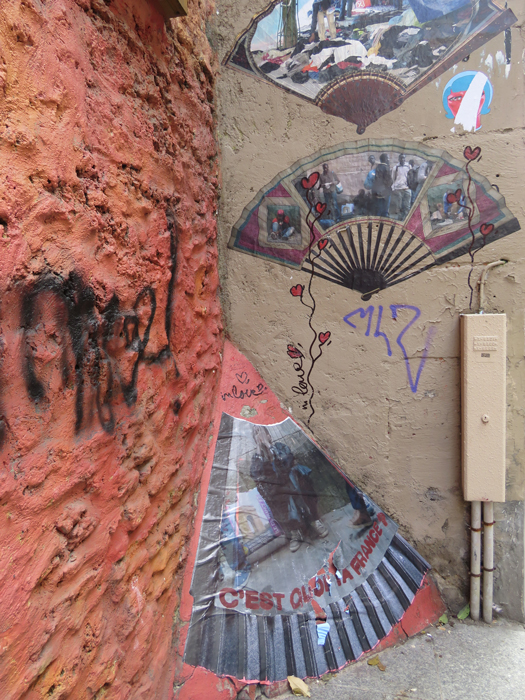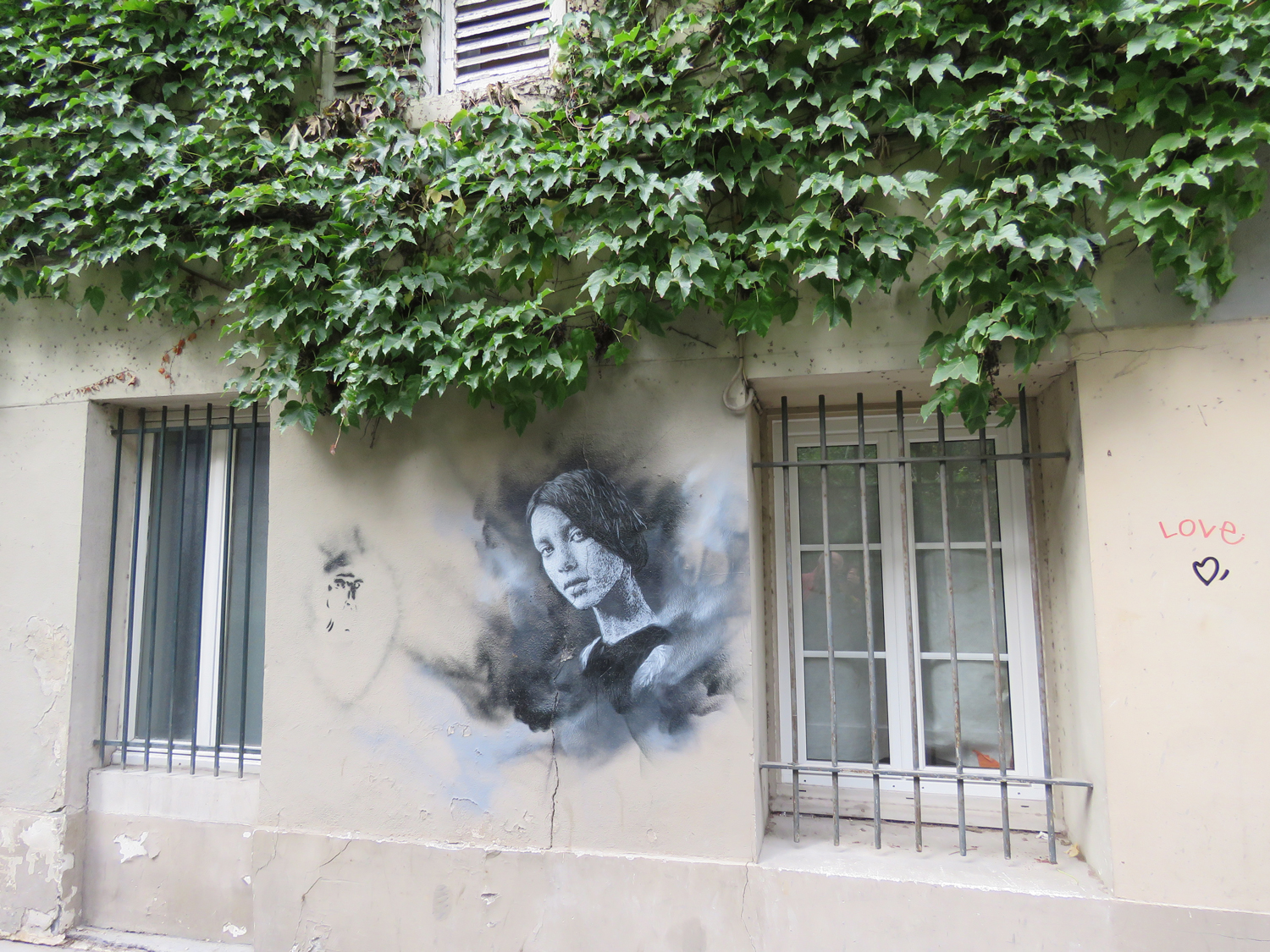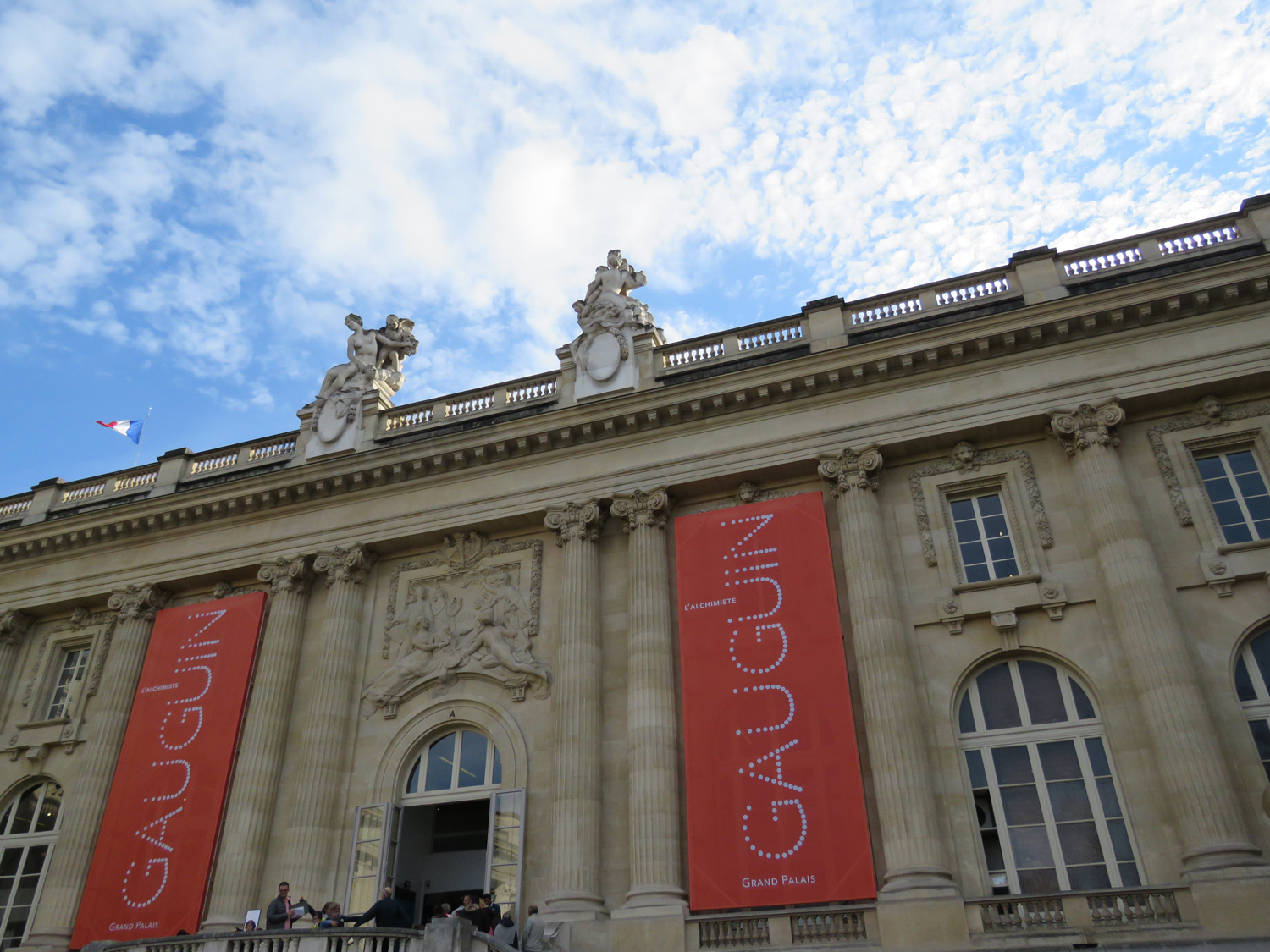Drifting in Paris
/The mural in the Gare de l'est (train station). It's a mural depicting soldiers leaving to the front, their families sending them off, from the station, most likely soldiers fighting in the front lines in the Ardennes region. (Photo by Criselda Yabes)
My friend M had asked me to meet him there. I had to look around before I saw it in the foyer, which is now planted with kiosk of beauty products, sandwiches, chocolates and muffins I would never buy for three euros and seventy centimes.
There it was, a mural done by an American painter, depicting families seeing soldiers off to the front in the east against the Germans during the World War One.
Once you’ve lived in Paris, becoming a Parisian becomes an art itself. The minute you arrive in this city, where beauty is both grand and understated, you immediately find your point of reference. And at the same time you will discover that something quite new may have always been there.
It’s to the east of the city where you won’t see the Eiffel Tower or the Arc de Triomphe. Leave that to the tourists. M took me to the side streets and passages blooming with graffiti art, this part of Paris that is just as remarkable as seeing the old painting at the train station.
All these pictures are street art in the smallest streets and 'passages' (alleys) in a neighborhood in the east of Paris, not far from the Gare de l'est. They show diversity and beauty, the hidden side of Paris far from the big lights of the Eiffel Tower and other well-known tourist spots. (Photos by Criselda Yabes)
You don’t need a map. You can find your way around with the natural compass of every Parisian, munching on a croissant ordinaire along the way. M thought we were off the grid of the arrondissement but after having asked a couple sitting at a café for directions, we were actually on track to get to the place where we were going to have lunch.
These building-sized murals are in the 13th arrondissement of Paris, which is known as the 'Chinatown.' The neighborhood is being spruced up with paintings such as these. (Photo by Criselda Yabes)
It was at the city’s oldest marche couvert -- ‘covered’ food market. There was a beeline for the Moroccan tagines. We went to line up for chez Wagner and his organic meals. The guy taking the order was a Senegalese. Behind the counter was a Chinese helping in the kitchen and a Moroccan doing the dishes, and the chef looked Danish – although given the name Wagner he might be a German. Our waitress was an Algerian.
Looking at this mix of people, this was the Paris I have always known, with a subtle improvement: they’re friendlier. That’s an upgrade from the old days. They’re beginning to accept the mood for globalization, at last.
Having a long lunch at the market (where no one shoves the bill at you to force you to leave because the place is packed) is both traditional and chic enough. M has had it with restaurants offering concept this and concept that. He was happy with his weekend meal of roasted chicken, salad, and potatoes. It’s not because he doesn’t like what’s new; it’s that he didn’t see anything new in what’s supposed to be new.
Well, the latest fad is brunch. It descended on the Parisians like lightning, if you can imagine foragers suddenly discovering granola. The idea of it was perfectly snapped up by a bakery cum café chain called Le Pain Quotidien, where you can actually have your breakfast and lunch put together at any time of the day. They serve healthy food and that was the thrill, a menu for an average price of twenty euros each (including a drink).
More than a decade ago I would never have thought Parisians to see the light of day. Organic food made inroads, but vegetarianism was another thing. Now they can differentiate between a vegetarian and a vegan. McDonald’s launched Le Grand Veggie burger (4,30euros) and the popular frozen food shop Picard has a variety of meals of ‘Tout bon, tout veggie’, also for less than five euros. Don’t I just love it!
Some cafes overdo it. I know one in the Bastille neighborhood that draws in clients for the library ambiance, but I overheard one of the waitresses not knowing the difference between rice and quinoa. A bowl of it, or shall I say a scoop of it, with some cubes of squash and garnishing of vegetables was a rip off at 15 euros.
What made the covered market more special was that, right beside it, was a bookstore called Comme Un Roman (Like a Novel) – and it was just as packed. The sales people were nice and helpful. We took our time browsing. The selection was appetizing. This is probably what has made them survive, while a favorite I used to frequent at the Latin Quarter has shut down. The charm of this city is back; I’m in love again.
This was the real Paris for me. My simple Saturday lunch was better than having one at a restaurant along the Champs Elysee, which hasn’t changed much either when I went for a walk a few days later to reach the Grand Palais for the celebrated Gauguin exhibit. What has changed, are the lines to the museums, with the exception of the Louvre and the Musee d’Orsay.
The Grand Palais (by the Champs Elysee) exhibiting the works of Paul Gauguin for the autumn and winter. It was Paris's biggest exhibit at that time. (Photo by Criselda Yabes)
Gone are the days when you get up one Sunday morning deciding tout a coup for a museum visit. For years I lived near the catacombs whose existence no one paid any mind to; today the line crawls around the block.
And the museum on contemporary art nearby was inconspicuous. This fall there was an exhibit on photographs from Mali in the 1960s, I didn’t think people would queue up for that on a rainy Sunday but they did. You’ve got to beat the line by buying your tickets online for a specific day and a specific hour. Spur of the moment is over.
My friend M wanted to see pictures of the Buddhist temples in Afghanistan that were blown up by the Taliban, in a gallery on the rue du Temple – we’re still on the east of Paris. We were walking in the Marais quarter and what do you know, it was right there as we turned – still without a map. There was a bit of a crowd for the size of a gallery.
The photographs of the Bamiyan temple were displayed in a panorama divided in chunks like paintings from the Japanese Edo period. Each frame sells for 12,000 euros. I thought about a Nobel prize winner Gao Xingjian who said that in Paris, you travel the world. M was nostalgic about the time he went to this Afghan village, camping on a cliff just to see the historical temple. And I have always dreamed of going to Mali.
In Paris, you dream about these things in a café. Again we went walking around looking for one. It’s the art de la derive, the art of drifting. We were in the fringes of what used to be a sleazy neighborhood and it was taking on a semblance of gentrification, bubbling with hangouts for the normal, basically non-bourgeois Parisians.
We talked ‘til the night. In the hours of rambling and ruminating, at least three homeless people approached us for some coins. That didn’t happen before; the homeless had kept to themselves under the bridge of the Seine. What do we make of this?
Early in the autumn, there were demonstrations against new labor laws scrapping the old that had been there for centuries. The strikes petered out and the signing ceremony for legislation was done at the palace on nationwide television, again never done before.
France is on the verge of a change, in the midst of a Macron revolution. The new president has been criticized for being careless with his words – but I am certain that he will not say of the French people, Let them have cake!
Criselda Yabes is the author of "Below the Crying Mountain" set in the rebellion of the 1970s in the south. It won the UP Centennial Literary Prize in 2008 and was nominated for the Man Asian Prize in 2010. She is currently based in Manila.
More articles from Criselda Yabes










